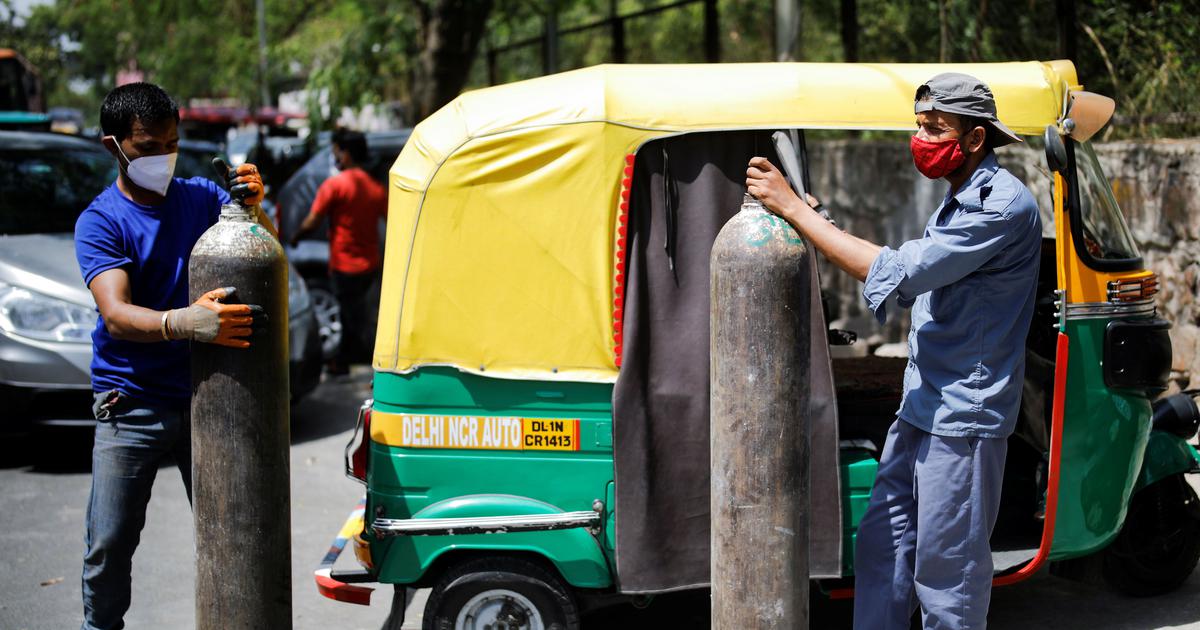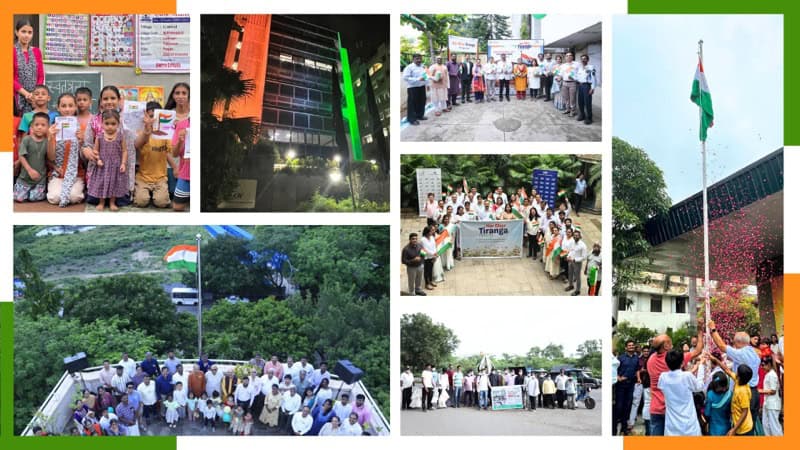– The production of Liquid Medical Oxygen is not the large issue, distribution is. The armed forces and Industry have stepped in to help here.
– Oxygen, previously given to Industry, is now being used for covid emergency. Steel plants have captive oxygen plants to meet their production needs. These plants will be working overtime to produce more oxygen, which will then be supplied to hospitals.
– Hoarding by people as well as black-marketeers is also contributing to the scarcity. State governments are taking strict action against offenders.
How the Industry works
Liquid Medical Oxygen (LMO) is produced from atmospheric air using compressed distillation techniques. The process of distillation can take up to two-and-a-half days and results in lakhs of litres. Special cryogenic tankers, designed to maintain temperatures of -180 degrees Celsius, carry the LMO to distributors across the country. The distributors then convert the liquid oxygen into its gaseous form, pump them into cylinders, and transport these cylinders to hospitals. Local vendors, who cater to home patients, also buy some of these cylinders.
India’s daily oxygen production capacity, till the second wave,was about 7,127 MT. In non-pandemic times, the health sector used up about 800MT daily and Industry consumed the rest. The pandemic, especially the second wave, has thrown things out of gear. To put the situation in perspective, on April 12 the demand for LMO was about 3,842 MT, this figure shot up to 6,785 MT on April 22. Technically, the country still has a few hundred metric tonnes to spare, so why is it that state after state is complaining of acute shortage? Importantly, what is being done to address the situation?
Problems. Solutions
Transportation takes time.
Routinely LMO is transported through roads. Government data show India has 1,172 oxygen cryogenic tankers that carry LMO to different parts of the country. Often long distances have to be covered and hence the time taken for transportation is fairly long. Till before the pandemic, neither the number of tankers nor the transportation time was an issue, now both are matters of concern.
To address this, nitrogen and argon tankers are being converted into oxygen-carrying vehicles. The country is also importing tankers, manufacturing new ones,
and using the Air Force to airlift empty ones back to the plant in order to speed up one-way travel. Trains too have been pressed into service to ferry tankers back and forth. Businesses have also stepped in to help. Linde India and the Tata Group are working together to being in 24 cryogenic containers. Each of these containers will be able to ferry 20 tonnes of oxygen and will also double up as storage in remote areas. The Indian Air Force has already airlifted four of these cryogenic oxygen containers from Singapore.
There are leaks in the distribution system
Hoarding by people as well as profiteers is creating an artificial shortage. This has led to oxygen prices skyrocketing beyond the reach of common man. State governments are cracking down on black marketeers and handing out stiff penalties. Additionally, intense outreach is being done to spread awareness about hypoxia in order to curtail panic buying.
At current projections, demand will exceed supply
The second wave is yet to peak; current production will have to be ramped up to meet the projections. Oxygen supply to industries has been cut since April 18, oxygen produced in iron and steel plants being diverted for medical use, and industrial oxygen manufacturers are being encouraged to produce medical oxygen. With these measures, the government estimates that LMO capacity will increase by 3,300 MT. Currently production has already increased to about 9000 MT
The Health Ministry has also sanctioned the installation of 162 Pressure Swing Adsorption (PSA) plants to directly use atmospheric air and separate it under pressure to filter out nitrogen. India is also expected to receive 50,000 MT through the import route. Efforts are also on to set up independent oxygen plants as well as dedicated oxygen plants at major hospitals.
Centre and State roles are also being clearly demarcated. – Union Govt will ensure the supply side but equitable and fair distribution under close monitoring is to be the sole responsibility of the State Governments. With dedicated teams at Centre and State level to oversee the production, supply and distribution with seamless coordination will help overcome the crisis in next few days as the demand plateaus when the peak of second wave is reached.
Author – India@75 Foundation
Previous Blog given below:





